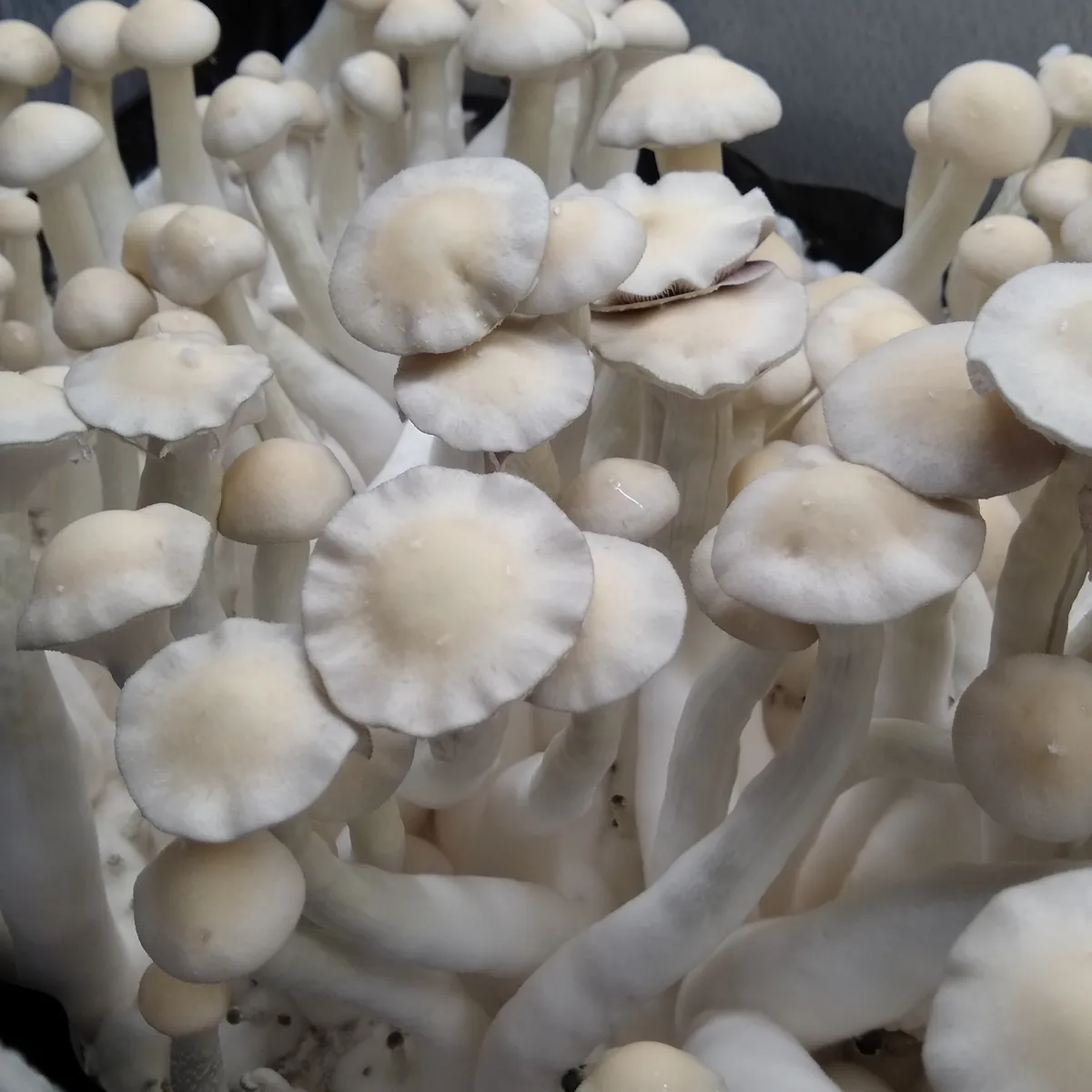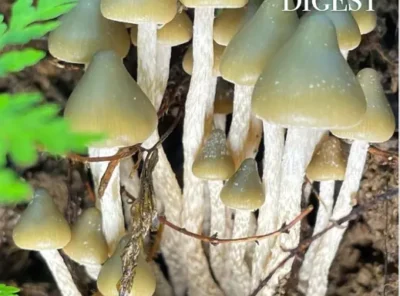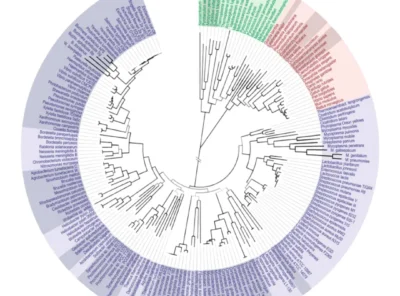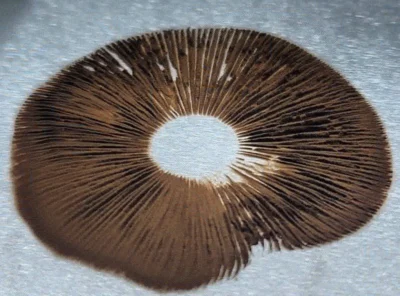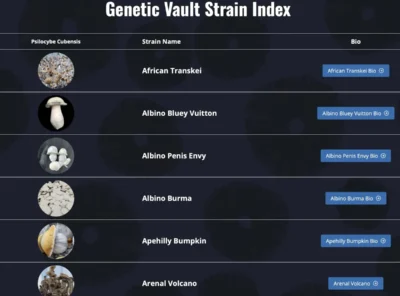Leucistic Burma Bio
Leucistic Burma History
Leucistic Burma is a remarkable variation of the classic Burma strain. One that caught the attention of researchers and collectors for its ghostly appearance and subtle coloring. Unlike its pigmented parent, this lineage produces fruiting bodies that are nearly albino, with soft lavender undertones emerging as they mature. The caps often take on wavy, flowing shapes. Giving the strain an unmistakable aesthetic presence among Psilocybe cubensis.
Its genetic identity is as intriguing as its appearance. Leucism, unlike full albinism, does not eliminate all pigmentation but instead washes it out, leaving behind a pale and sometimes multi-colored overlay. This partial expression of pigment gives Leucistic Burma its delicate palette while still allowing for purple spores. Although spore production is lighter than in many other cubensis strains, the discharge remains normal, ensuring continuity across generations.
The strain’s story begins with mycologist Milo Thatch, who first isolated it through careful work in the lab. By cloning and swabbing fruits from a Petri dish grown from standard Burma spores. Thatch uncovered the leucistic expression and stabilized it into a recognizable strain. Over successive generations, Leucistic Burma has proven both reliable and fascinating. Consistently producing pale fruiting bodies with occasional multi-toned variations that highlight its genetic diversity.
For researchers, Leucistic Burma represents a living example of how genetic quirks shape fungal expression. Collectors, it is prized for its rarity, elegant form, and the intrigue of its backstory. A strain born from the subtropical fields of Myanmar, re-imagined in the laboratory through isolation, and carried forward as one of the most visually unique cubensis lineages available today.
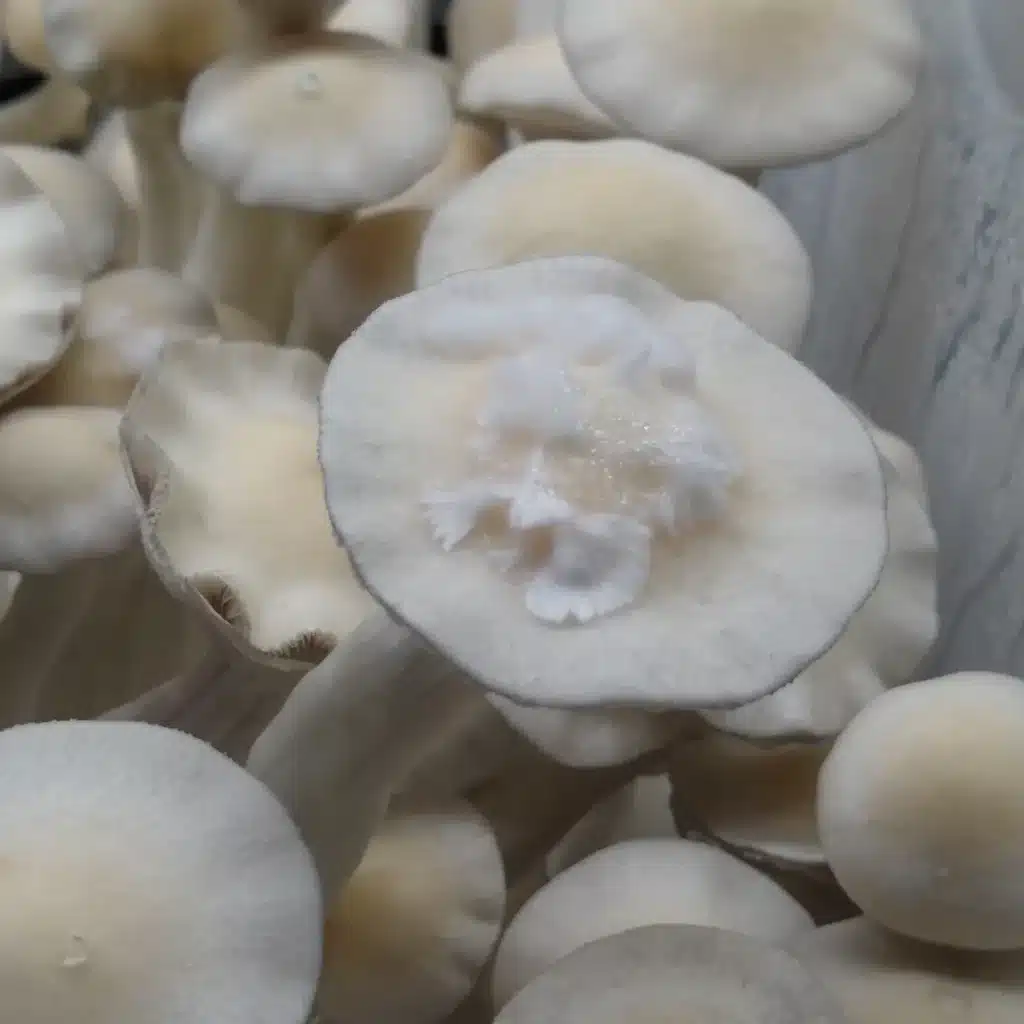
Leucistic Burma Bio Strain Overview
Variety Name: Leucistic Burma
Origin Location: USA (Lab Found)
Species: Psilocybe cubensis
L. Burma is a visually striking Psilocybe cubensis variety, featuring almost albino fruiting bodies with soft lavender tones when mature. Its wavy cap formations and delicate coloring make it one of the most aesthetically appealing leucistic strains available.
